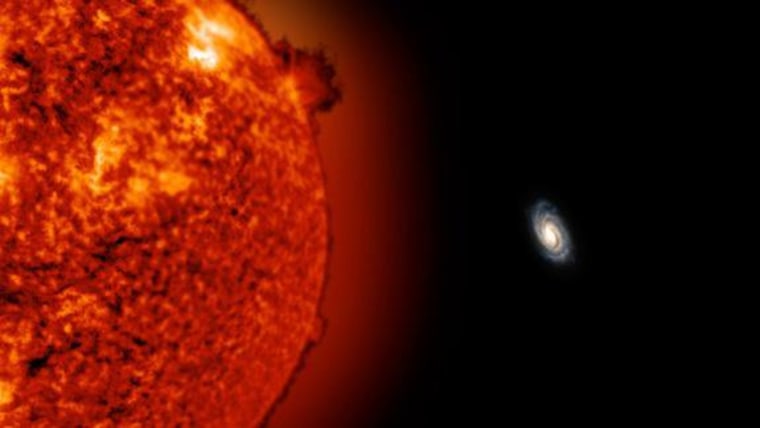Astronomers have discovered the farthest-flung stars yet known in the Milky Way.
The two objects — known as ULAS J0744+25 and ULAS J0015+01 — are about 775,000 and 900,000 light-years from Earth, respectively, making them both about five times more distant than a satellite galaxy known as the Large Magellanic Cloud.
"The distances to these two stars are almost too large to comprehend," study lead author John Bochanski, of Haverford College in Pennsylvania, said in a statement. "To put it in perspective, when the light from ULAS J0015+01 left the star, our early human ancestors were just starting to make fires here on Earth."
The Milky Way extends far beyond its familiar disk, which is just 100,000 light-years or so wide. The galaxy is surrounded by a sparse "halo" of stars — perhaps stragglers left out there after the Milky Way's many mergers with dwarf galaxies over the eons, researchers say.
Scientists know this halo extends to at least 500,000 light-years away, but its exact dimensions are unknown. Bochanski and his colleagues decided to probe the halo's outer reaches, hunting for a type of star called cool red giants.

Cool red giants are much rarer than red dwarfs, which make up about 70 percent of the Milky Way's stars. But they're about 10,000 times brighter, making them much easier to see from a distance.
"It really is like looking for a needle in a haystack," Bochanski said. "Except our haystack is made up of millions of red dwarf stars."
- Mike Wall, Space.com
This is a condensed version of an article that originally appeared on Space.com. Read the entire story here. Follow Mike Wall on Twitter @michaeldwall and Google+. Follow us @Spacedotcom, Facebook or Google+.
- Milky Way Quiz: Test Your Galaxy Smarts
- Spitzer Completes 360-Degree Panorama Of Milky Way | Video
- How Many Stars Are in the Milky Way?
Copyright 2014 SPACE.com, a TechMediaNetwork company. All rights reserved. This material may not be published, broadcast, rewritten or redistributed.